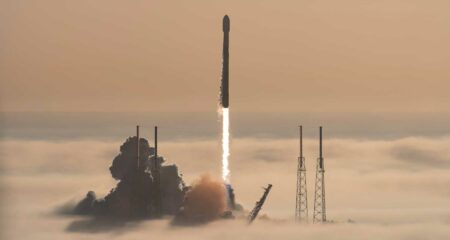 Last Friday, SpaceX achieved something incredible. It successfully landed one of its Falcon 9 rockets on a small barge bobbing in the ocean. This is after the rocket delivered a 1,5t supply payload for the International Space Station into orbit, and just nine minutes after it lifted off.
Last Friday, SpaceX achieved something incredible. It successfully landed one of its Falcon 9 rockets on a small barge bobbing in the ocean. This is after the rocket delivered a 1,5t supply payload for the International Space Station into orbit, and just nine minutes after it lifted off.
If this doesn’t sound incredible to you, consider the fact that in 60 years of spaceflight, neither Nasa nor the Russian space agency have ever landed (or even attempted to land) the first stage of a rocket. Instead, they’ve let the rocket simply fall back to earth and (if possible) recovered the wreckage.
Now, after just six years of work, SpaceX is landing rockets on both land and sea. The videos of Friday’s landing are breathtaking. The rocket lands so smoothly it’s as though they are playing a launch video in reverse as a prank.
Granted the “barge” is really an “autonomous spaceport drone ship” with special engines that steady the platform as the rocket touches down, but the achievement remains an incredible one.
The reason this is so critical is that a rocket is a very expensive machine to simply throw away. The rocket accounts for 99,7% of the current cost of launching something into orbit. Fuel accounts for just 0,3% of that cost. By making the rocket reusable, SpaceX is betting that it can launch things into space for a fraction of the cost of its competitors.
SpaceX is already the cheapest player in the market. It can launch a payload into geostationary orbit for around US$12 000/kg — that’s 50% cheaper than its nearest competitor.
Elon Musk, SpaceX’s founder and CEO, is confident that if the company can perfect the re-usability of Falcon 9 (and it’s bigger brother Falcon Heavy) the price could drop by as low as $22/kg . This would turn launching something into space into a routine event that even start-up companies could afford.
This allows SpaceX to have what sounds like impossible goals, like launching a “constellation” of 4 000 satellites into low-earth orbit to bring the Internet to remote parts of the globe. In January 2015, Musk said that this could be a reality “within five years”. While some are sceptical about that timeline, at least it’s now within the bounds of possibility. Ten years ago it would have been laughable.
Although they’re focused on changing the world, the SpaceX team also clearly has a sense of humour. The company’s autonomous barges are named things like “Of Course I Still Love You” and “Just Read the Instructions” — references to the novels of Iain M Banks. That’s about as geeky and as endearing as you get.
Even if SpaceX doesn’t ever launch its “constellation”, it has made it possible for almost anyone to dream about launching their gadget or even themselves into space. At $22/kg, the average person would pay $1 320 for a rocket into space. Of course, the other costs (like a vehicle with life support) would still be substantial, but it could lower the cost to a point where space tourism might be within the reach of people other than billionaires.
But all of this is just a means to an end for Musk, whose ultimate goal is a manned mission to Mars within his lifetime. In that context, the Falcon 9 is merely a stepping stone. You have to admire a guy whose ambitions are so grand that revolutionising an entire industry is just the start.
You could call Musk an egomaniac or a loony but there’s no denying that he’s moving the world forward. The incredibly talented team he’s assembled at SpaceX are making the first real advances in spaceflight in a generation.
While the rest of us are squabbling over the best operating systems for our smartphones, these guys are planning for interstellar travel. Let’s celebrate that spirit, not sneer at it. — (c) 2016 NewsCentral Media




